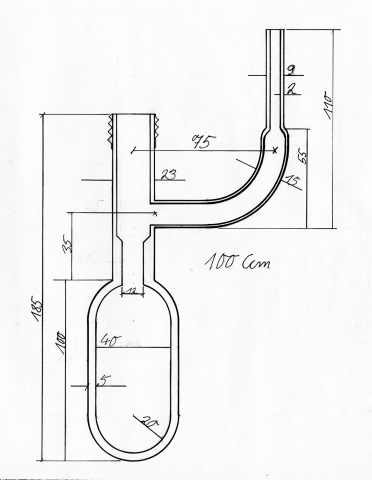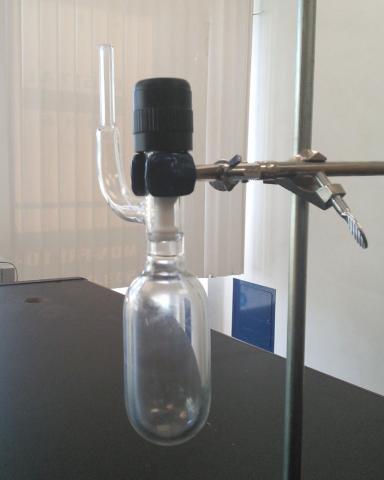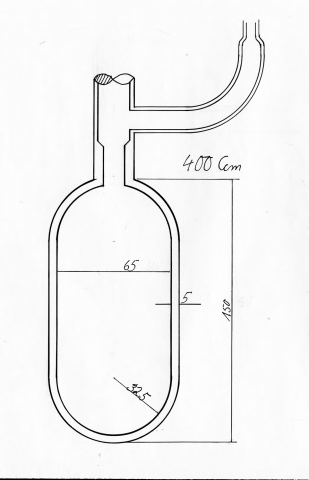Thick-walled (5 mm, borosilicate (Pyrex, Jenaer Glas)), 12-mm stopcock, to allow introduction of standard stirring bar and wide-stem (9 mm o.d.) funnel to fill in reagents and solvents easily and quickly.
A Carius tube of this type may be used for reactions under absolutely anhydrous conditions under protective gas or after evacuation (usually at -196°C) under autogeneous pressure, while contents are at all time observable. Photochemical, Diels-Alder and other reactions involving gases or low-boiling liquids even at very low (e.g. -78°C) temperature, triethylborane-induced radical reactions, generation (from diphosgene), storage of and reactions with phosgene, preparation and isolation of moisture-sensitive reagents (e.g. Pb(OAc)4 from Pb3O4 and acetic acid with subsequent removal of excess acetic acid + Ac2O and acetic anhydride in vacuum), drying of volatile materials (e.g. low-boiling materials which may be added and removed with vacuum transfer), as well as storage of anhydrous reagents (e.g., SO3, bromine over P2O5) with easy removal through vacuum transfer, drying of solvents with removal through vacuum transfer (e.g. acetonitrile over P2O5), reactions at temperatures somewhat higher than the boiling temperature of the solvents used are some of the applications of this remarkable but little known piece of laboratory equipment (see commentary below). The side-arm allows for vacuum transfer of reagents and solvents, thus entirely excluding any exposure to the atmosphere. Available in several modifications and sizes from 50 ml to 1 liter. The Carius tube in the present form has many of the same applications as the Schlenk tube, but is easier to handle. In short, the Carius tube allows the total isolation of the raction space from the environment.
Other products from Nordland-Glas usable with the Carius tube are the wide-stem funnel and the vacuum line.
Commentary: Reactions at temperatures higher than the boiling temperature of the solvents or reagents used must be conducted with proper precautions in a hood behind safety shielding and the flask must cool down before cautious opening. Reactions that evolve gases must not be run in a sealed Carius tube. The Carius tube may replace the implementation of a refluxing apparatus.



